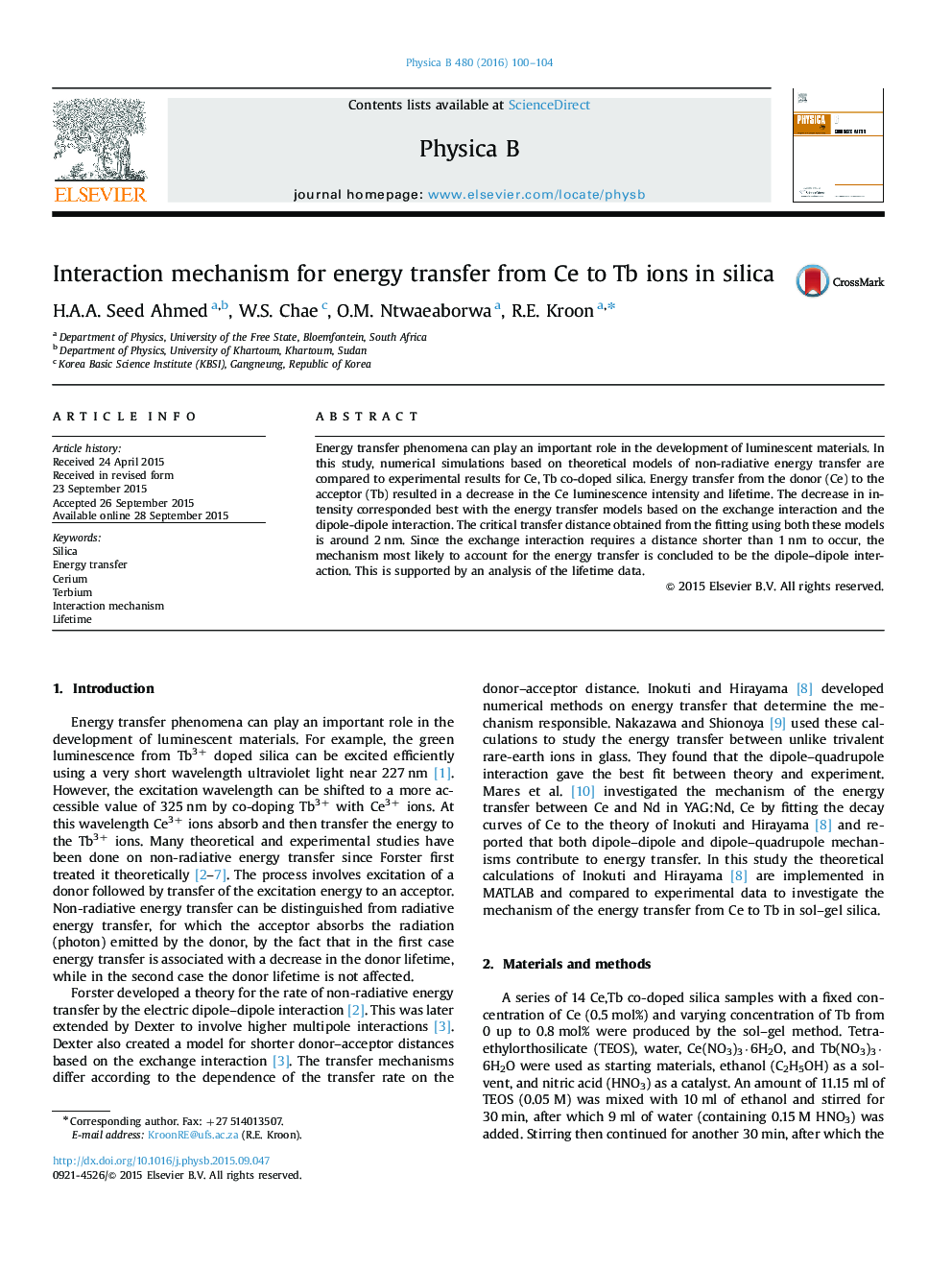| کد مقاله | کد نشریه | سال انتشار | مقاله انگلیسی | نسخه تمام متن |
|---|---|---|---|---|
| 1808665 | 1525169 | 2016 | 5 صفحه PDF | دانلود رایگان |

Energy transfer phenomena can play an important role in the development of luminescent materials. In this study, numerical simulations based on theoretical models of non-radiative energy transfer are compared to experimental results for Ce, Tb co-doped silica. Energy transfer from the donor (Ce) to the acceptor (Tb) resulted in a decrease in the Ce luminescence intensity and lifetime. The decrease in intensity corresponded best with the energy transfer models based on the exchange interaction and the dipole-dipole interaction. The critical transfer distance obtained from the fitting using both these models is around 2 nm. Since the exchange interaction requires a distance shorter than 1 nm to occur, the mechanism most likely to account for the energy transfer is concluded to be the dipole–dipole interaction. This is supported by an analysis of the lifetime data.
Journal: Physica B: Condensed Matter - Volume 480, 1 January 2016, Pages 100–104